List of Authors
>>About this blog
Recent blog post
|
[O'age]
Nov. 30, 2016 14:00
While walking along Shin-ohashi-dori St., I saw the display of "Tokanbori-dori", so at a later date, look for the display of the old moat traces. I managed to find an explanation board for "Inaribori Ruins". There was also an explanation board for "Gyotoku Riverside" nearby. It is not listed in the Monoshiri Encyclopedia, so I will introduce it in the following photo.
Tokanbori Street
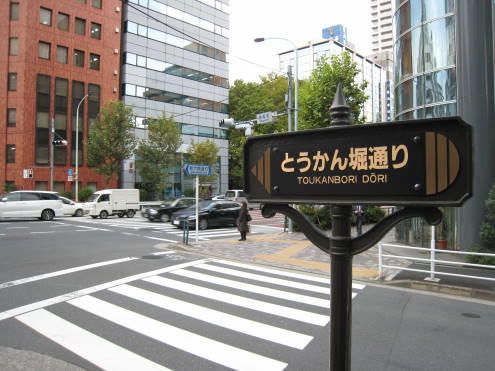
Explanation board (Chuo-ku Board of Education) of the ruins of Inaribori (Tokanbori)

Gyotoku Riverside (Chuo-ku Board of Education)
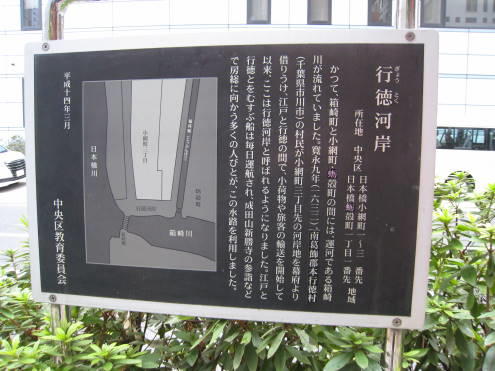
Looking up at the highway above this area, I remember the days when I checked in nearby and went to Narita Airport by bus several decades ago. Hiroshige draws this area with "Mitsumata Wakare no Fuchi".
In addition, there is an explanation board near (northwest direction), "Maison Konosu Founding Land". Compared to the cafe "Maison Konosu" (published on Monoshiri Encyclopedia p26), here it is described as "Western restaurants that also serve as bars". It seems that many famous writers have gathered.

[Asunaro]
Nov. 29, 2016 09:00

Mimizuku at Koami Shrine is named after the Doburoku Festival (Niiname-no-Matsuri) and the New Year.
It is made from Susukiki, one of the seven herbs in autumn.
The benefit is “going” to “mi (body)” and the family “mi (body)”.
It will be awarded for that.

I was caught by the Chinese zodiac sign next year.
By the way, what is the difference between "Mizuku" and "owl"?
I found that both are the same type of owl and owl.
It seems common to call those who have ears (Hasumi) as earthworms.
"Mizuku in the downtown area" also has a strong ears.
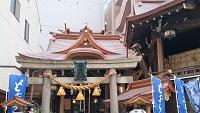
◆Koami Shrine
16-23, Nihonbashikoamicho, Chuo-ku, Tokyo
[Dye]
Nov. 23, 2016 09:00
The weather is fine in November and there are many days to go out. 
The other day, I went to Hamarikyu Onshi Garden with my family Chibi.
For families with children from the age of 0 to junior high school students living in the city, if you present your infant medical card or child medical card at the entrance, the admission fee for up to two accompanying adults will be free . .
(until March 31, 2017)
Click here for details. → https://www.city.chuo.lg.jp/kusei/kohokotyo/koho/h28/280501/08_01/index.html
There were many people who were relaxing with rugs.
Small children run and walk on the lawn 
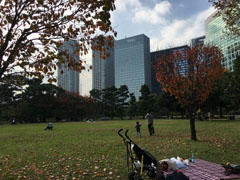 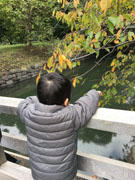 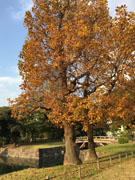
The collaboration between the trees and the buildings where the autumn leaves have begun is quite easy.◎
Even though it is located in the city center, calm time and fresh air flow.
"Azumaya (rest area)" is located near the center of the garden.
They sell souvenirs, plastic bottles, and buns.
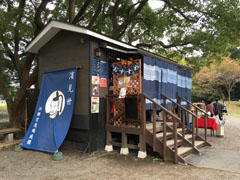
"Kurimanju" that my Chibi liked for some reason.
I bought it at the shop and got it back at the rest area on the side.
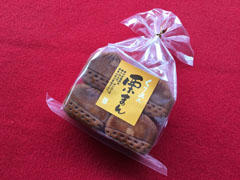 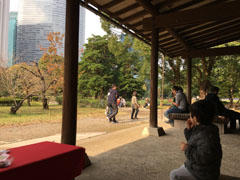 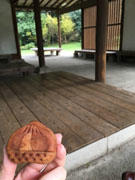
The effect of repeating "one steamed manju, Kudasaisai Nana " endlessly (^^;) " endlessly (^^;)
There are several washrooms in the park where you can change diapers. ☆ For the time being...
In addition, there was a place to stop bicycles at the major entrance.
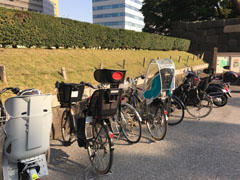 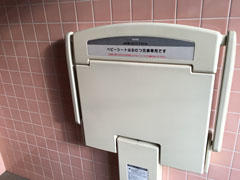
And a cat.
Is it the Lord here? 。
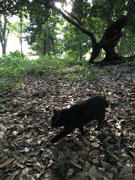
It was very popular with children. =^^=
The park has historical buildings and landscapes, and I think it's wonderful to be able to enjoy while thinking about history with children.
You can experience nature and history from a young age, and you may find fun in history on your own. ^^
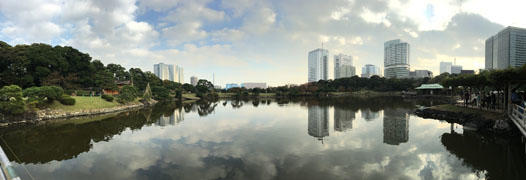
The "tidal pond" draws seawater from Tokyo Bay.
I would like to visit several times and enjoy the changes caused by the tide.
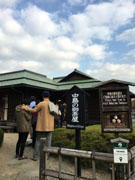 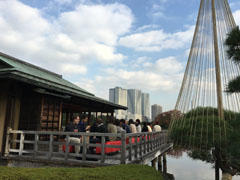
"Ochiyaya of Nakajima" with a good view.
It is a facility for entertainment and entertainment, and it is said that it was built by the 6th Shogun Ienobu.
Even now, you can enter freely inside, and it is popular with foreigners.
Speaking of tea, the other day (November 21), a tea ceremony experience was held at "Houmetei" in the park.
The next time is January 23, 2017 (Monday), so please call the Hamarikyu Onshi Garden Service Center to apply.☆
It seems that there is also an explanation in English for foreigners. Please check here for details of the tea ceremony experience.
http://www.tokyo-park.or.jp/announcement/028/detail/33460.html
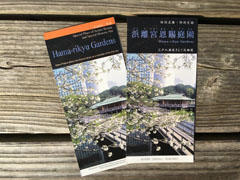
The Hamarikyu Garden has a wide variety of foreign language pamphlets.
In addition to English, there are also French, Chinese, and Korean.
Even if you are not resident in the city, you can fully enjoy the admission fee for 300 yen for adults.
Now is the season of autumn leaves. It is recommended because you can feel the change of the four seasons and the taste of history.
◆Hamarikyu Onshi Garden
Address: 1-1, Hamarikyuteien, Chuo-ku
A 14-minute walk from Higashi-Ginza Station on the Tokyo Metro Hibiya Line and Toei Asakusa Line.
A 7-minute walk from Tsukiji Market Station on the Toei Oedo Line.
HP: http://www.tokyo-park.or.jp/park/format/index028.html
Opening hours: 9:00 a.m. to 5:00 p.m.
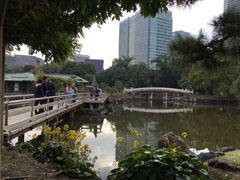
[Nojinya]
Nov. 22, 2016 18:00
On a sunny Sunday, take a walk along the Sumida River Terrace to reach Toyomi Bridge over the Nihonbashi River.
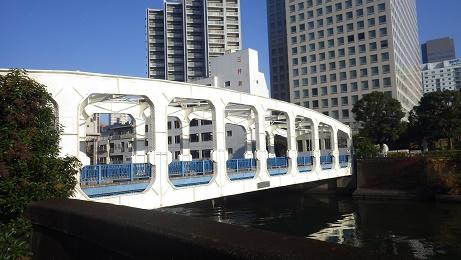
Toyomi Bridge is a place often used for filming dramas and movies due to its design and beauty of the scenery, but in Yue Hiraiwa's novel "Onjuku Kasemi", around Toyomi Bridge where the Nihonbashi River flows into the Okawa (Sumida River), Okawabata (Okawabata)'s basket "Kasasemi" is set on stage. In the Edo period, Eitai Bridge seemed to be a little upstream from the present, over the north side of the Nihonbashi River, and the location of "Kasemi" was just right above the current Eitai-dori St. (around the star mark on the map).
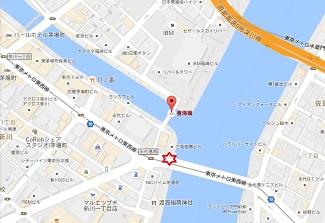
"When I thought that a sharp cold had hit for only three days, it was early spring, when the water of Okawa suddenly became muddy. 。 。 <Omitted>. 。 。 The mansion of his older brother, who served as the scrutiny of magistrate's office Minamicho, was at a time when the gate was standing. From the time I leave the mansion, I'm going to go somewhere in my heart tonight in Okawabata-machi. When Togo Kanbayashi broke up with his friends, he naturally turned his drunk legs there. A little off the side of Toyomi Bridge, "Onjuku, Kasemi" and a small oriental lamp float in the night fog. It's a moist night with no stars or moon."
The first episode of "Onjuku Kasemi" "Early Spring Guest" begins in this way. The drama will be developed mainly by Togo Kanbayashi, the main characters Togo and the master of the Hatago "Kasemi" of Okawabata, who is the younger brother of Minamicho magistrate's office and the professors of Kobusho from the skill of swords, and Rui Shoji, a childhood friend of Togo.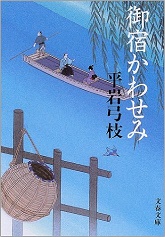
The "Kasemi" series has been serialized in "Novel Sunday Mainichi" in 1973, until the latest work "Ise Sanri" in January 2016 (40 books in Bunko: released from Bunshun Bunko) . In Kasemi, a small incident that occurs in the daily lives of the common people, mainly in the downtown area of Edo, is spoken in a short story, and the appeal is that readers can go back in time to Nihonbashi, Hatchobori, Yagenbori, Shinkawa, and Gunshu in the Edo period together with the same perspective as the person being created.
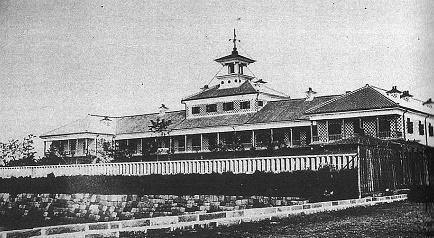 (The photo shows "Edo Hotel (Tsukiji Hotel Building)":* Public domain) (The photo shows "Edo Hotel (Tsukiji Hotel Building)":* Public domain)
The novel continues from the Edo period in the mid-19th century to the Meiji era, but the protagonist is also in his mid-20s to mid-50s, and continues to be talked about by changing generations to his daughter's generation. In the Meiji edition, "Shin Onjuku Kasemi", Tsukiji Reservoir began to appear as a stage, A Rokuban Girls' School (the predecessor of Women's Academy), Edo Hotel (Tsukiji Hotel Building: burned down by Ginza Fire), British Virns and Chen Otori, a tailor of Kiyokuni who has a store in Irifune, will also enrich the international colors.
If you are tired of walking around the city in the daytime, why don't you enjoy the history of Chuo-ku from the Edo period to the Meiji period while reading the "Kasemi" series in autumn night?
[Sam]
Nov. 20, 2016 14:00
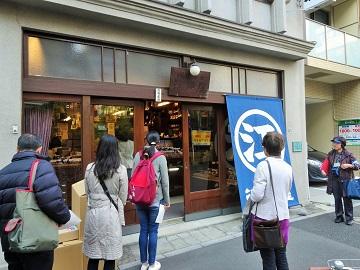 On November 17, the Chuo-ku Machikado Exhibition Hall Management Council hosted a tour of the Chuo-ku Machikado Exhibition Hall-Experience the cutting-edge medicine world and the long-established tradition-. On November 17, the Chuo-ku Machikado Exhibition Hall Management Council hosted a tour of the Chuo-ku Machikado Exhibition Hall-Experience the cutting-edge medicine world and the long-established tradition-.
Schedule:
Visit the Daiichi Sankyo Medicine Museum~
Visit to Edoya's brush exhibition hall
Visit the Iba Senukiyo-e Museum
In addition, the journey to the destination is a city guide by Chuo-ku Cultural Property Supporters.
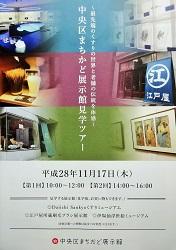 At the Daiichi Sankyo Medicine Museum, after watching a video of "one medicine" on a round monitor in the center of the lounge on the 1st floor, receive a medal with an IC chip and go to the 2nd floor. At the Daiichi Sankyo Medicine Museum, after watching a video of "one medicine" on a round monitor in the center of the lounge on the 1st floor, receive a medal with an IC chip and go to the 2nd floor.
In addition to `` medicine and Nihonbashi '' that introduces the deep relationship between medicine and Nihonbashi Honmachi, `` What is medicine? '', `` medicine and body '' `` work of medicine '' `` Ayumi of medicine '', `` make medicine '' Using medals, see, listen, touch and experience.
At the Edoya Brush Exhibition Hall, you can experience brushing as a traditional craft designated by Tokyo, as well as exhibits such as juji made of horse hair. Make-up brush with squirrel hair has a surprisingly soft touch.
At the Iba Senukiyo-e Museum next to the Ibasen store, you will see the "Iba Senban Tokaido 53th Party" currently on display.
At the same time, we will talk about the Ukiyo-e printmaking process, etc., based on the division of labor of publishers, painters, sculptors, and suriers who play the role of producers.
This is a mini-tour where you can get a glimpse of a part of the local cultural resources.
[The Rabbit of Tsukuda]
Nov. 20, 2016 09:00
In the first guide of the exciting tour of the Chuo-ku Tourism Association held last October, we guided the Okuno Building.
The information is as follows. And I had permission to enter the entrance in advance, so I would like to everyone on the day.
I was able to feel the retro atmosphere of Showa inside the building.
(Contents of guidance)
The Okuno Building was built in 1932 and was one of the best luxury apartments in the Ginza area called "Ginza Apartments". In addition, it is Japan's first private residential building with an elevator, designed by Ryoichi Kawamoto, who was a member of the Junkai at the time.
Since many buildings burned in the Great Kanto Earthquake, the Junkai has built concrete apartments in Tokyo and Yokohama that incorporate cutting-edge electricity, city gas, water supply, flush toilets, dustshoots, etc. at the time. It is an organization built in 16 places. The fact that Aoyama Apartment, one of the Dojunkai apartments, was dismantled in 2003 and became Omotesando Hills was remembered as it was often featured in the news.
Now that the existing building as a Dojunkai apartment has disappeared, the Okuno Building designed by Ryoichi Kawamoto of Dojunkai may be valuable as a building that retains its style.
Also, looking at the current situation where Takeda Building, one of the early Showa era buildings remaining in Ginza, is being dismantled and become a hotel, its rarity is increasing more and more. There are eight buildings in the early Showa period remaining in Ginza.
(That's all.)
And the other day, I took a closer look around the gallery while guiding a friend of the Okuno Building's first visit.
I met Ryo Ito's solo exhibition at Galerie La Gallerillar on the 6th floor.
 Akira Ito solo exhibition Akira Ito solo exhibition
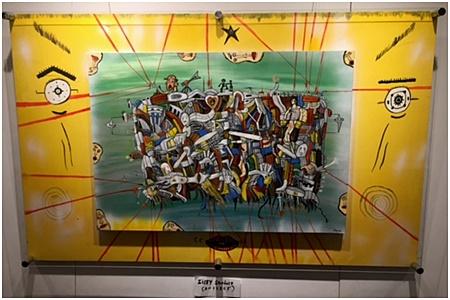 "Refraction star crust" "Refraction star crust"
Ito is an anime-born painter living in Nakatsugawa City, Gifu Prefecture. He excels in precision painting and expresses pain and suffering.
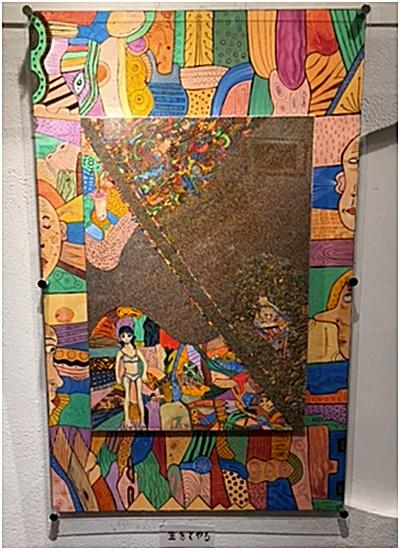 "I'll live," "I'll live,"
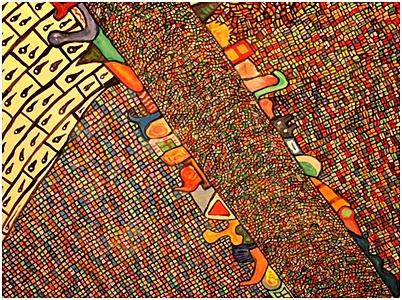 Up of "I'll live" Up of "I'll live"
It seems that this work took 5 years to complete.
Ito's work, whose theme is distress and pain, seemed to have light and strong energy ahead of it.
In the galleries on each floor of the Okuno Building, there were other French embroidery, the first solo exhibition of photographs, and a new world of creation. I spent a very close two hours with my friends.
Please take a manual elevator and wake up to each gallery.
|
Links
|




















 (The photo shows "Edo Hotel (Tsukiji Hotel Building)":* Public domain)
(The photo shows "Edo Hotel (Tsukiji Hotel Building)":* Public domain) On November 17, the Chuo-ku Machikado Exhibition Hall Management Council hosted a tour of the Chuo-ku Machikado Exhibition Hall-Experience the cutting-edge medicine world and the long-established tradition-.
On November 17, the Chuo-ku Machikado Exhibition Hall Management Council hosted a tour of the Chuo-ku Machikado Exhibition Hall-Experience the cutting-edge medicine world and the long-established tradition-. At the Daiichi Sankyo Medicine Museum, after watching a video of "one medicine" on a round monitor in the center of the lounge on the 1st floor, receive a medal with an IC chip and go to the 2nd floor.
At the Daiichi Sankyo Medicine Museum, after watching a video of "one medicine" on a round monitor in the center of the lounge on the 1st floor, receive a medal with an IC chip and go to the 2nd floor. Akira Ito solo exhibition
Akira Ito solo exhibition  "Refraction star crust"
"Refraction star crust" "I'll live,"
"I'll live," Up of "I'll live"
Up of "I'll live"
